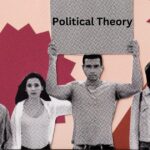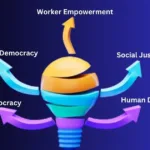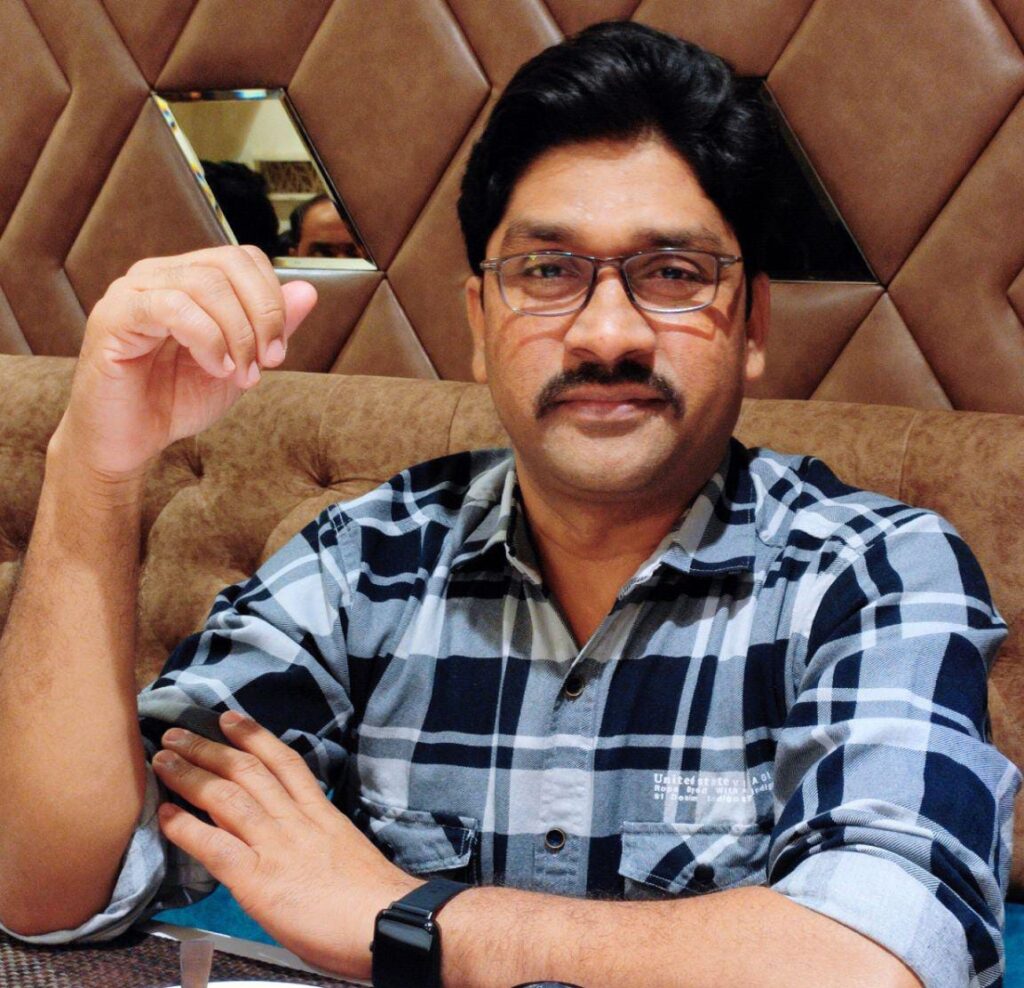The old way of running things in government called the Traditional Approach to Public Administration, started in the late 1800s and early 1900s. It believed in having a clear order of authority, specialized jobs, and strict rules. They took ideas from scientific management to make organizations work better. This approach aimed to use resources well and reach goals by having a clear boss at the top. It thought that strict rules would ensure government workers acted the same way every time. It also thought it was important for each person to have their job and not do other people’s work. This way, they believed everyone could do their best at what they were good at. Overall, this traditional way of doing things in government focused on using resources well, having clear rules, and making sure everyone had their special job to do.
Max Weber’s Contribution to the Traditional Approach to Public Administration:
Max Weber, a renowned sociologist and political economist, played a pivotal role in shaping the traditional approach to public administration.
In his influential essay “Bureaucracy,” Weber introduced the concept of an ideal bureaucracy characterized by key features such as hierarchical organization, specialization, and the implementation of formal rules and procedures.
Weber stressed the significance of a rational-legal authority structure, advocating for bureaucracies to function based on explicit rules and regulations to ensure efficiency and predictability.
Moreover, Weber’s theories emphasized the meritocratic nature of bureaucratic systems, where appointments are made on the basis of qualifications and competence rather than personal connections.
His ideas laid the foundation for understanding the principles of organizational structure and management in public administration, leaving an enduring impact on subsequent generations of scholars and practitioners in the field.
Weber’s legacy persists as his concepts continue to influence discussions on the nature and functioning of bureaucracies across various societal contexts.
Exploring the Traditional Approach:

Let’s meet Max Weber, a big thinker from the year 1919. He had some smart ideas about how governments should be structured. His thoughts gave birth to the Traditional Approach, a way of doing things that’s all about having a clear order, following strict rules, and being organized when providing public services. It’s like having a plan to make sure everyone knows what they’re doing.
Historical Significance and Evolution
Picture the 20th century, a time when things were getting busier and more complicated. The Traditional Approach became popular because it was like a helpful tool for governments. It helped them deal with the challenges of lots of people moving to cities and needing more services. With its focus on having clear rules and being organized, it was like a playbook for managing the important work of the government.
As time went on, people started to notice that while the Traditional Approach was useful, it also had some problems. It was a bit too rigid and didn’t always fit well with how society was changing. But even with its flaws, we can still learn a lot from its history and how it shaped the way we think about running governments today.
Definitions:
Think of the Traditional Approach as a set of rules and ways of doing things in government. It’s like a guidebook that says, “This is how we should run things.” Imagine you have a school with teachers, students, and a principal. The Traditional Approach would be like having clear rules about who’s in charge, how decisions are made, and how everyone should follow the rules to make things work smoothly.
How Scholars and Experts See It Over Time:
– Back in the Day:
Imagine you have a grandparent who tells you stories about the past. Scholars and experts, likewise grandmas and grandpas, have been talking about the Traditional Approach for a long time. In the early 1900s, a smart person named Max Weber had some big ideas. He said, “Let’s have a clear order, rules, and be organized when we run things.” That’s like the starting point for the Traditional Approach.
– As Time Goes On:
Like how your favorite game gets updated, the Traditional Approach changed a bit over the years. More smart people added their thoughts. Some said, “This approach is good because it keeps things organized.” Others said, “Hmm, it’s a bit too strict, and we need to be more flexible.” It’s like the approach evolved, just like how your favorite game might get new features.
– Today’s Thoughts:
Think about how you and your friends discuss new ideas. Scholars and experts today are still talking about the Traditional Approach. Some say, “It helped us in the past, but we need new ways now.” Others might say, “Let’s keep some parts of it because they still work.” It’s like a ongoing conversation about how we run things in our big “school” called the government.
So, in simple terms, the “Definitions” section helps you understand what the Traditional Approach is all about and how smart people have thought about it over a long time – like a wise grandparent sharing stories about how things used to be and how they’ve changed.
1. Max Weber:
Max Weber, a German sociologist, and political economist, introduced the concept of bureaucracy. He envisioned a structured organizational system with clear hierarchies, formal rules, and specialized roles. Weber emphasized the importance of an impersonal, rational approach to administration.
2. Fred W. Riggs:
Fred W. Riggs, an American political scientist, is known for his theory of “prismatic society.” He proposed that administrative systems in different countries reflect the social and cultural diversity of their societies. Riggs emphasized the need for administrative models to adapt to the unique characteristics of each nation.
3. Woodrow Wilson:
Woodrow Wilson, the 28th President of the United States, is often considered the father of public administration. In his seminal essay “The Study of Administration,” Wilson advocated for a professional, scientific approach to public administration. He believed in separating politics from administration and emphasized efficiency and expertise in governance.
4.Mary Parker Follett:
Mary Parker Follett, an American social worker and management consultant, contributed to the human relations movement in public administration. She emphasized the importance of collaborative decision-making and believed in resolving conflicts through integration rather than domination. Follett’s ideas laid the foundation for modern concepts of organizational behavior.
These thinkers have significantly influenced the development of public administration theories and practices, shaping the way we understand and approach governance and organizational management.
Explanation:
1. Principles of the Traditional Approach:
Imagine you’re playing a game, and there are certain rules everyone has to follow to make the game fair and fun. The Traditional Approach to Public Administration is a bit like that. It’s a way of doing things in government, and it has some important principles.
– Clear Hierarchy:
Think of a school with teachers, students, and a principal. The Traditional Approach likes having a clear order, like who’s in charge and who follows the rules. It’s like saying, “Here’s the boss, here are the managers, and here are the workers.” Everyone knows their role.
– Formal Structure:
Imagine you’re building a tower with blocks. The Traditional Approach is like building with a plan – each block has a specific place. In government, this means having a formal structure, like different departments with specific jobs. It’s all organized, like putting the right blocks in the right places.
– Adherence to Rules:
Think of rules as the instructions for your favorite board game. The Traditional Approach says, “Let’s have clear rules, and everyone should follow them.” It’s like making sure everyone knows how to play by the same rules to avoid confusion. Rules help things run smoothly.
2. Emphasis on Hierarchy, Formal Structure, and Rules:
– Hierarchy:
Imagine a tree with branches – the bigger branches are like the top people in charge, and the smaller branches are the ones who report to them. The Traditional Approach likes this hierarchy, where there’s a clear order from top to bottom. It’s like saying, “This person is the boss, and everyone else has their place.”
– Formal Structure:
Think of a beehive – each bee has a role, and they work together to make honey. The Traditional Approach is a bit like that beehive, where everyone has a specific job in a well-organized structure. It’s not chaotic; it’s planned and formal.
– Adherence to Rules:
Imagine playing a game where everyone agrees to follow the same rules. The Traditional Approach is like that – it says, “Let’s have rules, and everyone should stick to them.” This makes things predictable and helps in managing tasks efficiently.
In simple terms, the “Explanation” section helps us understand that the Traditional Approach is like playing a game with clear rules, where everyone has a role, and there’s a plan in place. It’s about having a structured and organized way of running things in government.
Features:
Think of the Traditional Approach to Public Administration like your favorite game, where each feature adds something special to make it interesting and unique. Here, we’re going to uncover the special characteristics that make the Traditional Approach stand out:
1. Clear Roles and Levels (Like Player Classes):
– In your favorite game, you might have different classes of players, each with unique abilities. Similarly, the Traditional Approach says, “Let’s have clear roles in government.” It’s like having players with specific classes, where everyone knows their job and place in the game.
2. Structured Gameplay (Similar to Game Rules):
– Just like a game has rules to keep it fair and enjoyable, the Traditional Approach believes in structured gameplay. It’s about having a set plan or formal structure in government, ensuring that tasks are organized and everyone knows how to play by the rules.
3. Specialized Tasks (Think of Unique Abilities):
– Imagine a game where each character has a special ability. The Traditional Approach is a bit like that, emphasizing specialized tasks for different departments. It’s saying, “Let’s have experts in specific areas to make the overall game (government) run smoothly.”
4. Efficiency and Predictability (Achieving High Scores):
– In a game, you aim for high scores by being efficient and knowing what to expect. The Traditional Approach values efficiency and predictability in government. It’s like saying, “Let’s do things in the most effective way possible, and everyone should know what to expect.”
5. Hierarchy for Order (Similar to Leaderboards):
– Consider leaderboards in a game, where the top player is at the highest rank. The Traditional Approach likes this hierarchy – a clear order from top to bottom. It’s saying, “Let’s have a ranking system in government, so everyone knows their place and who’s in charge.”
6. Formal Communication Channels (Like In-Game Chat):
– In your favorite game, you communicate with teammates using in-game chat. Similarly, the Traditional Approach believes in formal communication channels. It’s about having clear ways for information to flow, like an organized chat system to avoid confusion.
In simple terms, the “Features of Traditional Approach of Public Administration” are like the cool aspects in your favorite game that make it unique and enjoyable. It’s about having clear roles, following rules, and ensuring efficiency in the “game” of government.
Views of Supporters of the Traditional Approach: Hearing from the Fans:
Imagine the Traditional Approach to Public Administration as a sports team, and its supporters are like passionate fans cheering for their team. In this section, we’re going to hear from these supporters and understand why they are so enthusiastic about the Traditional Approach:
1. Team Unity and Clear Strategy (Like a Winning Game Plan):
– Think of a sports team that wins because they work together seamlessly. Supporters of the Traditional Approach say, “This approach gives us team unity and a clear strategy.” It’s like having a winning game plan in government, where everyone knows their role.
2. Efficiency and Predictability (Similar to Consistent Performances):
– Just like fans appreciate a sports team’s consistent performances, supporters of the Traditional Approach value efficiency and predictability. They say, “This approach helps us perform well consistently, like a reliable sports team.”
3. Respecting Established Rules (Like Following Game Rules):
– Imagine a sports team that follows the rules, earning respect from fans. Supporters of the Traditional Approach believe in respecting established rules in government. It’s like saying, “Let’s play by the rules to maintain fairness and order.”
4. Clear Leadership and Hierarchy (Similar to Team Captain and Players):
– In sports, a team with a clear leader and hierarchy often performs better. Supporters of the Traditional Approach say, “Having clear leadership and hierarchy is crucial.” It’s like having a team captain and players who know their positions.
5. Organized Game Plan (Similar to a Well-Structured Playbook):
– Fans love teams with a well-structured playbook. Similarly, supporters of the Traditional Approach appreciate its organized game plan for government. It’s like saying, “Let’s have a playbook to guide us in running things smoothly.”
6. Specialized Roles for Expertise (Like Star Players in Key Positions):
– Picture a sports team with star players in key positions. Supporters of the Traditional Approach value specialized roles for expertise. It’s like saying, “Let’s have experts in specific areas, just like star players excel in their positions.”
In simple terms, the “Views of Supporters of the Traditional Approach” are like hearing from passionate fans of a sports team. They appreciate the approach for its team unity, efficiency, and adherence to rules, likening it to a winning strategy in the game of government.
Criticism:
Just like how your favorite game or activity has its drawbacks, the Traditional Approach to Public Administration also has its critics. In this section, we’re going to discuss the challenges and criticisms people have raised about the Traditional Approach, providing a balanced view:
1. Rigidity and Lack of Flexibility (Similar to Sticking to One Play):
– Think of playing a game with only one strategy. Critics say the Traditional Approach can be rigid, like sticking to one play. They argue, “We need to be flexible and adapt to different situations, just like changing strategies in a game.”
2. Slow Response to Change (Similar to an Outdated Game):
– Imagine playing an outdated game that doesn’t keep up with the times. Critics say the Traditional Approach can be slow to respond to change. They express, “In a fast-changing world, we need an approach that adapts quickly, just like updating a game.”
3. Emphasis on Bureaucracy (Similar to Too Many Rules):
– Picture a game with too many rules that make it less fun. Critics argue that the Traditional Approach emphasizes bureaucracy, like having too many rules in government. They say, “We should simplify things and avoid unnecessary red tape.”
4. Inequality and Lack of Inclusivity (Similar to Excluding Players):
– Imagine a game that excludes certain players. Critics say the Traditional Approach can lead to inequality and lack of inclusivity. They express, “We need an approach that includes everyone and ensures fair participation, like making sure all players can enjoy the game.”
5. Resistance to Innovation (Similar to Not Adding New Features):
– Think of a game that never adds new features. Critics argue that the Traditional Approach can resist innovation. They say, “Innovation is like adding new features to keep things exciting. We should be open to new ideas and improvements.”
6. Overemphasis on Hierarchy (Similar to Ignoring Team Collaboration):
– Picture a game where only the captain’s decisions matter. Critics say the Traditional Approach may overemphasize hierarchy, like ignoring team collaboration. They argue, “Collaboration is essential, and decisions should involve input from everyone, not just the top.”
In simple terms, the “Criticism of the Traditional Approach” is like looking at the downsides of a game or activity. Critics highlight issues such as rigidity, slow response to change, and potential inequality, providing a balanced view to help us understand both the strengths and weaknesses of the Traditional Approach.
Limitations:
1. Rigidity and Lack of Flexibility:
– The Traditional Approach is often criticized for its inherent rigidity. The emphasis on a clear hierarchy, formal structure, and strict adherence to rules may hinder flexibility. In a rapidly changing world, this inflexibility can impede the government’s ability to adapt to new challenges and emerging trends.
2. Slow Response to Change:
– Linked to its rigidity, the Traditional Approach is known for its sluggish response to change. In dynamic environments where societal, economic, and technological shifts occur swiftly, the approach may struggle to keep pace. This can result in bureaucratic inertia and delays in implementing necessary reforms.
3. Emphasis on Bureaucracy:
– Critics argue that the Traditional Approach tends to prioritize bureaucracy over efficiency. The layers of hierarchy and formal procedures can contribute to bureaucratic red tape, slowing down decision-making processes. This bureaucratic emphasis may impede the swift resolution of issues and hinder innovation.
4. Inequality and Lack of Inclusivity:
– The strict adherence to hierarchy and formal structure may lead to inequalities within the system. Critics argue that this approach can exclude certain individuals or groups from decision-making processes, resulting in a lack of inclusivity. It may hinder diverse perspectives and contribute to an imbalance of power.
5. Resistance to Innovation:
– Innovation is crucial for addressing contemporary challenges, but the Traditional Approach has been criticized for resisting innovative practices. The entrenched focus on established rules and procedures may create a culture resistant to change, hindering the implementation of new ideas and technologies.
6. Overemphasis on Hierarchy:
– While a clear hierarchy provides order, an overemphasis on this aspect can stifle collaboration. Decision-making concentrated at the top may lead to a lack of input from lower levels, hindering the potential for creative problem-solving and limiting the organization’s responsiveness to diverse perspectives.
7. Complexity and Administrative Burden:
– The formal structure and adherence to rules can contribute to administrative complexity. This complexity, coupled with a multitude of rules and regulations, may create an administrative burden. The extensive bureaucracy involved in following procedures can divert resources and time away from addressing substantive issues.
8. Lack of Focus on Human Relations:
– The Traditional Approach often neglects the human aspect of administration. Critics argue that it places too much emphasis on organizational structures and processes, overlooking the importance of fostering positive human relations within the workplace. This neglect can lead to issues related to employee morale and motivation.
9. Uniform Application of Rules:
– While consistency is valued, the Traditional Approach’s insistence on a uniform application of rules may oversimplify complex situations. Critics argue that a one-size-fits-all approach may not be suitable for diverse contexts, and a more flexible strategy may be needed to address unique challenges in different departments or sectors.
10. Difficulty in Adapting to Cultural Diversity:
– In a globalized world with diverse cultures, the Traditional Approach may face challenges in accommodating cultural variations. The standardized rules and procedures may not align with the unique cultural contexts of different regions, potentially leading to inefficiencies and misunderstandings.
In conclusion, while the Traditional Approach has historical significance, its limitations underscore the need for modern administrative approaches that balance structure with flexibility, hierarchy with collaboration, and rules with adaptability to address the complexities of contemporary governance.
Conclusion:
As we reach the conclusion, it’s time to summarize the exciting journey we’ve had exploring the Traditional Approach to Public Administration. Imagine this part as the grand finale of a fireworks show, where we bring together all the dazzling lights and colors for one last spectacular display.
1. Recap of the Traditional Approach:
– We started by introducing the Traditional Approach, a historical guidebook for how governments should run things. It’s like a compass that guided nations through the challenges of growing societies and changing times.
2. Journey Through Definitions and Explanation:
– We delved into the definitions, unraveling the principles of hierarchy, formal structure, and adherence to rules. It’s like understanding the rules of your favorite game – the essential elements that shape how things are done.
3. Exploration of Features and Supporters:
– Like exploring the cool features of a game and hearing from its fans, we highlighted the unique aspects of the Traditional Approach. Supporters praised its team unity, efficiency, and structured gameplay, comparing it to a winning strategy.
4. Critical Examination of Criticisms:
– However, no game or approach is perfect. We critically examined the criticisms, acknowledging the drawbacks of rigidity, slow adaptability, and potential inequalities. It’s like recognizing the flaws in a game to understand its limitations.
5. The Grand Finale:
– Now, in our grand finale, we bring all these elements together. The Traditional Approach has been a significant player in the governance game, contributing its strengths and facing its challenges.
6. Final Thoughts:
– Just like after watching a fireworks show, we leave you with some final thoughts. The Traditional Approach, while rooted in history, has evolved over time. It has shaped the administrative landscape, but as times change, so do the strategies we need. The key lies in finding a balance between tradition and innovation, hierarchy and collaboration, rules and flexibility.
In essence, our exploration of the Traditional Approach is not the end but a pause before we embark on the next chapter of administrative theories. Like the finale of a fireworks show, it leaves us with a sense of awe, appreciation for the journey, and anticipation for what lies ahead in the ever-evolving world of public administration.
FAQs
Let’s address some common questions that might be lingering in your mind about the Traditional Approach. Think of this section as a helpful guide, clarifying any uncertainties you may have.
Q1: Is the Traditional Approach still relevant today?
A: While the Traditional Approach laid a foundation for administrative practices, its relevance today is a subject of debate. Some argue that its principles may be too rigid for the complexities of the modern world. Others believe certain aspects remain relevant but need adaptation to current needs.
Q2: Does the Traditional Approach hinder innovation?
A: Critics suggest that the Traditional Approach may resist innovation due to its emphasis on established rules and structures. However, supporters argue that adaptation is possible without abandoning the core principles, fostering a balance between tradition and innovation.
Q3: How does the Traditional Approach handle diversity and inclusivity?
A: Critics express concerns that the Traditional Approach might lead to inequalities and lack of inclusivity. Modern perspectives emphasize the importance of adapting administrative models to embrace diversity, ensuring fair participation and representation.
Q4: Can the Traditional Approach accommodate a fast-changing environment?
A: One criticism is that the Traditional Approach might be slow to respond to rapid changes. Supporters argue that with thoughtful adaptation, it can maintain efficiency while embracing flexibility to address evolving challenges.
Q5: Is hierarchy always a drawback?
A: While hierarchy is a key feature of the Traditional Approach, critics argue that it can stifle collaboration. Supporters highlight that clear leadership can bring order, but it’s crucial to balance hierarchy with inclusive decision-making processes.
Q6: Are there successful examples of countries using the Traditional Approach?
A: Historically, many countries adopted the Traditional Approach with success in managing bureaucratic functions. However, the effectiveness may vary based on the specific context, and modern administrations often integrate elements from various approaches.
Q7: How can the Traditional Approach adapt to the digital age?
A: Adapting the Traditional Approach to the digital age involves incorporating technological advancements while maintaining its core principles. Integrating efficient digital systems and fostering a culture of innovation are key considerations.
Q8: Can the Traditional Approach coexist with newer administrative paradigms?
A: Many experts argue for a blended approach, where elements of the Traditional Approach coexist with newer paradigms. This allows for flexibility, innovation, and responsiveness to contemporary challenges while retaining the strengths of tradition.
These FAQs aim to address common queries and provide insights into the nuanced aspects of the Traditional Approach to Public Administration, offering a well-rounded understanding of its place in the dynamic landscape of governance.
People Also Read: Public Administration and It’s Meaning, Definition, Features & Purpose.











Honestly very nice blog example very nice understanding is very good due to examples thank you very much sir keep writing
Most welcome.
Sir आपले सर्वच लेख अतिउत्तम असतात याचा पुरेपूर उपयोग होतो आपले लेख वाचले की असा भास होतो जणू काय तुम्ही समोर शिकवत आहात आपले मनापासून खूप खूप धन्यवाद तुम्ही आमच्या साठी एवढे करता
Get benefits from these blogs, and share them with your near and dear.